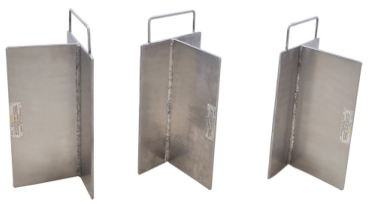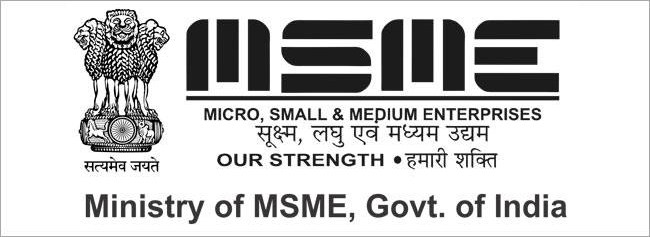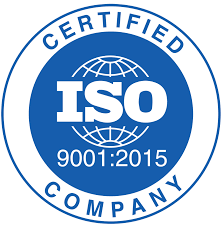Third Party Inspection for pressure vessel refers to independent inspection services that are provided by inspection agencies.
In purchasing and procurement projects the sellers and vendors are first parties. The second parties are purchasers or buyers.
First party inspection refers to quality control activities that are done by equipment vendors or sellers.
Second party inspection refers to inspection activities that are done by equipment buyers or purchasers.
In fact first party is seller and second party is buyer. So when you say second party inspection, it means that an inspection and quality control activities that are done by a buyer and when you say first party inspection, it means that an inspection and quality check that are done by a vendor in its construction shop.
These quality controls and inspections are done based on Performa Invoice, Purchase Order and International standards.
Third Party Inspection for Pressure Vessel
Third Party Inspection for Pressure Vessel refers to independent inspection activities that are done by a Third Party Inspection agency either hired by a buyer or seller
Third Party Inspection for Pressure vessels
Based on the ASME Code Section VIII, pressure vessels are containers for the containment of pressure, either internal or external.
This pressure may be obtained from an external source, or by the application of heat from a direct or indirect source, or any combination thereof.
All pressure vessel inspection and testing is done against the approved drawings, purchase order specifications, purchasers or company standards, and within the practices and rules of the country, state or province and any government decrees, laws, ordinance or regulation as may apply.
The applicable codes and specifications for a pressure vessel that is under the construction process is:
- Design code
- Purchase order specification
- Purchaser’s standards
- Approved drawings
And the applicable codes and standard are:
- ASME VIII Division 1 or 2
- ASME V
- ASME IX
The applicable codes and standard may be based other international standards such as BS 5500, etc. This content is general and can be useful if even the design code is different from ASME Code.
Third Party Inspection for Pressure Vessel – Required Documents for Third Party Inspector Review:
The list of documents normally is agreed upon in the Pre-Inspection meeting, which is held several weeks before the actual commencement of the inspection work.
The parties that participate in this meeting are the manufacturer, purchaser and third party inspection agency representatives.
These are the list of documents which are normally agreed to be presented to the inspector:
- Pressure Vessel Manufacture Quality Control Plan
- Pressure Vessel Inspection and Test Plan
- Pressure Vessel Data Sheet
- Pressure Vessel Approved Drawings
- Pressure Vessel Strength Calculation Sheets
- Pressure Vessel Material Test Reports
- Pressure Vessel Welding Specification Procedures (WPS) and Procedure Qualification Records(PQR)
- Pressure Vessel Welding Map
- Pressure Vessel Welders Qualifications Reports
- Pressure Vessel NDE Procedures
- Pressure Vessel NDE Personnel Qualifications Reports
- Pressure Vessel Heat Treatment Procedure
- Pressure Vessel Calibration Certificates for Test Equipment
- Pressure Vessel Hydrostatic Testing Procedure and Water Quality Document
- Pressure Vessel Preparation and Painting Procedure
- Pressure Vessel Preservation, Packing and Shipping Procedure
- Pressure Vessel Packing List
Third Party Inspection for Pressure Vessel – Material Inspection
The first actual inspection work on the pressure vessel is the raw materials inspection. Based on the ASME Code, providing material test reports for pressure vessel plates is mandatory. For other components, the marking inspection will be enough.
But if the purchase order has mandated the MTR to be provided for all components, such as nozzle pipes, fittings, etc., then the manufacturer needs to provide them as well.
As mentioned above, the original or authenticated copies of mill certificates for plates normally are available at the manufacturer’s premises.
The third party inspector examines these certificates for compliance with specifications, and where appropriate, drawings.
The review includes checks on:
- Certificate No.
- Heat or Cast No.
- Chemical Composition.
- Mechanical Properties.
- Heat Treated Condition.
- NDE Applied and Results.
Then the inspector witnesses the plate material identification on the certificates against the plate marking. It is also necessary to check the identification with the pressure vessel drawing datasheet, material list and other specifications as appropriate.
The transfer identification to cut off plates also is checked.
Visual inspections for surface finish and probable defects are done and dimensional compliance with specification also needs to be controlled.
When the third party inspector carries out the material inspection, then provides the inspection visit report (IVR), the report contains the following items:
- Confirmation of satisfactory document review
- Record of the endorsement of certification reviewed/witnessed
- Record of all non-conformities
- Record of any tests witnessed and the result
Third Party Inspection for Pressure Vessel – Fabrication
When the pressure vessel raw material inspection is carried out, and the results were satisfactory or non-conformities were closed by remedial action, then the pressure vessel manufacturer will start fabrication.
The third party inspector checks the following points on the pressure vessel, based on the inspection and test plan (ITP), which has already been agreed upon between the purchaser and the pressure vessel manufacturer.
The inspection scope is determined in the ITP. Some purchasers prefer to have stringent controls and assign the TPI for more “hold or witness points” for inspection and test activities, and some others prefer less “hold or witness points” and assign the TPI much more work in the “review document.”
This depends in the inspection budget, which purchasers assign for inspection. Much more inspection will have a much larger cost and less risk, and conversely, less inspection will have less cost but more risks.
Third Party Inspection for Pressure Vessel – Preparation for Welding
The third party inspector carries out the visual and dimensional check to ensure compliance with WPS and other specifications. Where specified, weld bevels are examined by the required code method after grinding/machining.
It is necessary that the edges and weld bevels are clean, dry and free from surface defects, laminations, cracks, voids, notches, etc.
They are causes for rejection unless suitable/satisfactory remedial action can be taken.
Weld repairs are carried out in accordance with the code requirements and approved by the client before welding proceeds and serious or excessive defects normally are reported.
If the third party inspector is not in the hold or witness point in the ITP for this inspection stage, then he/she will review the pressure vessel manufacturer quality control report in his/her coming visit or on the final inspection day.
Third Party Inspection for Pressure Vessel – Fit-Up Inspection
Shapes and dimensions are checked in accordance with the approved WPS and drawing.
Tack welds are produced using the applicable WPS conditions, and it is necessary to be visually free from defects.
Magnetic Testing (MT) or Penetration Testing (PT) may be performed in accordance with the code requirement.
Similarly, If the third party inspector is not in the hold or witness point in the ITP for this inspection stage, then he/she will review the pressure vessel manufacturer quality control report in his/her coming visit or on the final inspection day.
Third Party Inspection for Pressure Vessel – Monitoring of Weld Conditions
The third party inspector controls preheat heat temperature and method, interpass temperatures, weld material control, welder and process qualifications for conformity to the code requirements.
Similarly, If the third party inspector is not in the hold or witness point in the ITP for this inspection stage, then he/she will review the pressure vessel manufacturer quality control report in his/her coming visit or on the final inspection day.
Third Party Inspection for Pressure Vessel – Back Gouging Inspection
The third party inspector controls the shape and dimensions of the back gouged groove for conformity to the WPS requirement.
It is necessary that the visual appearance is clean and free from defects. NDE examination is done in accordance with the code requirement.
Similarly, If the third party inspector is not in the hold or witness point in the ITP for this inspection stage, then he/she will review the pressure vessel manufacturer quality control report in his/her coming visit or on the final inspection day.
Third Party Inspection for Pressure Vessel – Post Weld Inspection
After completion of all welding and grinding operations, a visual examination confirms there are no harmful defects such as cracks, lack of fusion, surface porosity or exposed slag inclusions, incomplete penetration, incorrect profile of the weld, lack of leg length and overlap.
Temporary attachments are removed, ground smooth, and the areas are checked for defects by MP or PT for defects.
Similarly, If the third party inspector is not in the hold or witness point in the ITP for this inspection stage, then he/she will review the pressure vessel manufacturer quality control report in his/her coming visit or on the final inspection day.
Third Party Inspection for Pressure Vessel – Non-Destructive Examination
NDE is performed by qualified personnel by the approved techniques. The techniques available are dependent on the vessel classification and the materials used.
Similarly, If the third party inspector is not in the hold or witness point in the ITP for this inspection stage, then he/she will review the pressure vessel manufacturer quality control report in his/her coming visit or on the final inspection day.
Third Party Inspection for Pressure Vessel – Weld Repair
The pressure vessel weld repairs are completed using an approved WPS method and retested accordingly.
It is necessary that all repairs are approved before any post weld heat treatment is carried out.
Third Party Inspection for Pressure Vessel – Post Weld Heat Treatment
The third party inspector reviews the post weld heat treatment record of the temperature and time in accordance with the approved code/procedure.
The results of hardness tests are reviewed in accordance with the code requirements.
Third Party Inspection for Pressure Vessel – Dimensional Measurement and Visual Inspection
The third party inspector checks all major dimensions and that the position/orientation of attachments are in accordance with the code requirements.
In addition, a full visual examination of both inside (where practicable) and outside surfaces of the vessel is completed by the third party inspector.
Particular attention is paid to the cleanliness of the interior of the vessel, the condition/appearance of welds and associated areas, and the condition of the sealing faces.
Similarly, If the third party inspector is not in the hold or witness point in the ITP for this inspection stage, then he/she will review the pressure vessel manufacturer quality control report in his/her coming visit or on the final inspection day.
Third Party Inspection for Pressure Vessel – Pneumatic Test
The third party inspector witnesses the low pressure pneumatic test for nozzle reinforcing pads, support saddles or other attachments when specified by approved low pressure pneumatic test procedure using soapy water as the indicating medium.
A minimum of 1 gauge with correct working ranges as described by the code is used.
Similarly, If the third party inspector is not in the hold or witness point in the ITP for this inspection stage, then he/she will review the pressure vessel manufacturer quality control report in his/her coming visit or on the final inspection day.
Third Party Inspection for Pressure Vessel – Hydro-static Testing
The third party inspector controls the following items for Hydro-static Testing:
- Calibration status and correct working ranges of gauges. A minimum of 2 pressure gauges are attached to each item under testing.
- Adequate provision for venting of high points and draining is provided.
- Test pressure is applied as directed by procedure or code until the testing limit pressure is reached. During hold period, a methodical check for leaks is conducted.
- Test pressures, metal and water temperatures are recorded.
- Water quality is as specified.
Special requirements of the purchaser’s specification for deflection or strain gauges or pressure/time/temperature recordings are examined by the inspector and the records are verified.
Third Party Inspection for Pressure Vessel – Final Inspection
After hydrostatic testing, the vessel is thoroughly drained and dried out by approved methods. All internal fittings, attachments, coatings or other requirements need to be completed.
The specified post hydrostatic test NDE needs to be completed and the vessel closed.
All pressure vessels are checked for cleanliness and dryness by an approved method.
The third party inspector rechecks the nozzle, saddle and bracket locations and orientations against the assembly drawings.
Third Party Inspection for Pressure Vessel – Name Plate
The content of the marking is checked in accordance with the approved drawing and specifications by the third party inspector.
Third Party Inspection for Pressure Vessel – Painting and Coating Inspection
Surface preparation for painting is checked for the following points, according to specification by the third party inspector:
- Cleaning method (Blast or scraping and wire brushing)
- Preparation grades
- Freedom from weld spatter, blow-holes and other defects
- Dry film thickness is checked according to specification
Surface condition needs to be free from pin-holes, runs damage and other discontinuity
Third Party Inspection for Pressure Vessel – Spares and Accessories
The third party inspector controls spares, tools and accessories and makes visual and dimensional inspection for materials, workmanship and quantity according to the purchase order specification and packing list.
The marking and/or tag is checked for identification.
Third Party Inspection for Pressure Vessel – Pressure Vessel Reporting
The third party inspector provides an Inspection Visit Report (IVR) after each visit, as well as a final report summarizing the activities carried out during the pressure vessel production in accordance with the contract requirements and circulated within the time limits specified in the contract.
The report is in the format required by the client and clearly indicates final acceptance or rejection of the pressure vessel.
Third Party Inspection for Pressure Vessel – Pressure Vessel Release Note
When required by the contract or purchase order, a release note is issued by the third party inspection agency and given to the manufacturer when the pressure vessels have been accepted.
Third Party Inspection for Pressure Vessel – Packing, Marking and Shipping
The following points are checked by the third party inspector:
- Cleanliness and dryness of pressure vessels
- Rust prevention for all machined surfaces
- Protection for cover for all opening and protruding parts
- Packing style and suitably for overseas transportation
- Shipping marks and other markings and notification of welding prohibited, etc.
- Where nitrogen purge is specified the gas pressure is checked and the presence of warning notices checked.
Third Party Inspection for Pressure Vessel – Pressure Vessel Final Book (Dossier)
The following final documents are reviewed and signed off by the third party inspector:
As built, drawings if required, Manufacturer’s data reports, Material certificate or certified mill test reports for all pressure parts, Material list or map, Welder record for each seam or map, Heat treatment records (Temperature-time record chart during PWHT), Dimensional record, NDE records, Production test record/mock test record, Alloy verification records, (if required), hydrostatic test record, Pneumatic test record, Hardness test record, Post weld heat treatment NDE, if specified, Name plate or other marks, Packing list, Spare parts and tool list. These are required for Third party inspection of Pressure Vessel.




















